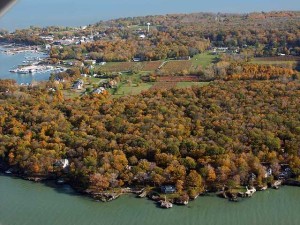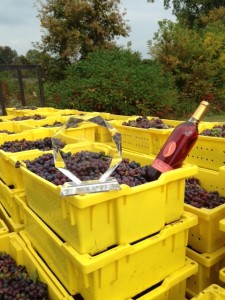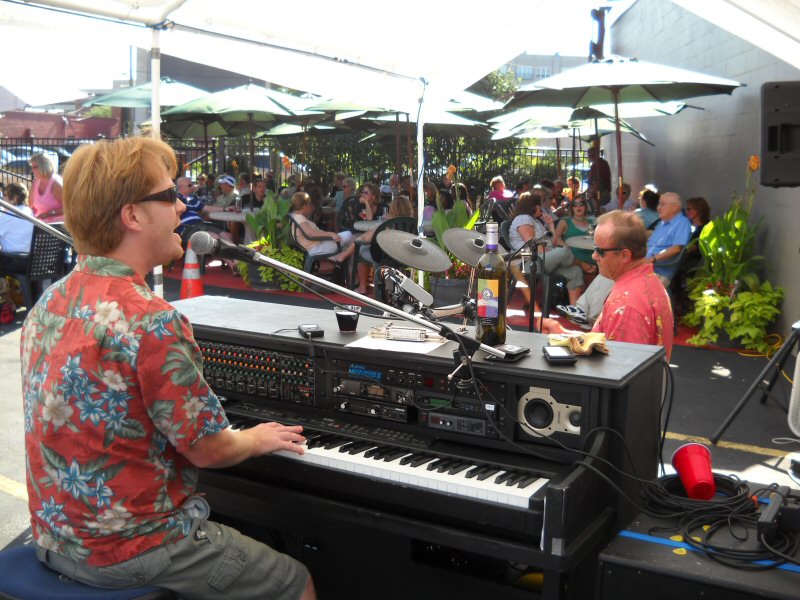Take An Interstate 80 Midwest Wine Tour
 A common thread stitching together the Midwest states is Interstate 80 (I-80) which connects the Midwest to both coasts. I-80 pushes like a needle through Ohio, Indiana, Illinois, Iowa and Nebraska, zipping past Great Lakes, crossing rivers, plunging into valleys and crossing plains.
A common thread stitching together the Midwest states is Interstate 80 (I-80) which connects the Midwest to both coasts. I-80 pushes like a needle through Ohio, Indiana, Illinois, Iowa and Nebraska, zipping past Great Lakes, crossing rivers, plunging into valleys and crossing plains.
Wine lovers who travel I-80, sampling local wines as they go, can see for themselves how each state’s topography and climate affects the wine grapes that are grown and the wine that is made. Like France’s highway E15, which links Burgundy, the Rhone Valley and Provence, I-80 is great way to experience changes in regional terroir while motoring across the American heartland.
This is a two-part story about the wine grapes along the I-80 corridor as well as the wines these grapes produce. The first installment features Ohio and Indiana.
Ohio
I-80 enters Ohio near Youngstown after crossing the Pennsylvania border. The highway skirts the far northeast corner of the state with its dozens of wineries (all of which sit close to I-90), and heads instead towards the southwestern shores of Lake Erie. Between the western suburbs of Cleveland and Port Clinton are ten wineries that are part of the Lake Erie Shores and Islands Wine Trail. Wineries here range from the historic Mon Ami to Firelands Winery in Sandusky, Ohio’s largest winery.
Christy Eckstein, executive director of the Ohio Grape Industries Committee, says the signature grapes grown in this part of the state are Vidal Blanc for white and Chambourcin for red. Still, she estimates less than 25% of grapes grown here are of those two varieties. ‘There’s a lot of diversity in the area,” she says.
Dave Scurlock, Ohio State University Viticulture Outreach Specialist agrees with Eckstein’s choices. ‘Vidal Blanc is an excellent producer in Ohio and if Chambourcin is grown properly it can produce a very high quality wine with rich colors and pleasant fruit forward aromatics.”
During Ohio’s growing season, Scurlock said that visitors will see Ohio grape growers active in their vineyards. ‘Chambourcin has to be cluster-thinned, “he said. “If the crop isn’t adjusted downward, the vines will gradually weaken and the wine suffer as a result.”
Other noteworthy grapes grown along I-80 in Ohio include La Crescent, a newer white wine hybrid, and Foch, a robust French hybrid.
Wineries in the Sandusky area and the nearby islands of Lake Erie also grow vinifera varieties like Cabernet Franc, Riesling, Chardonnay and Pinot Noir. The moderating effects of Lake Erie extend the growing season so that traditional European wine grapes will ripen. The traditional wines of Northern Ohio display earth and mineral notes and usually have a bright acidity that makes them good companions with a broad range of foods.

Before Prohibition, there were 17 wineries on Put-in-Bay, an island in western Lake Erie. Photo courtesy of www.putinbayphotos.com
Traminette is also an up-and-comer in this area, says Eckstein. Traminette is a white hybrid that was developed at the University of Illinois. The better Traminettes of Northern Ohio are virtually indistinguishable from Gewürztraminer, one of the grapes that was cross-bred to create Traminette.
Ohio wine grapes are typically kept as varietals during the wine-making process, though some are blended into off-dry table wines or made into ice wine. ‘Vidal Blanc can produce a very high quality, still, late-harvest ice wine,” says Scurlock. Heineman Winery on Put-in-Bay (an island in Lake Erie) produces a ‘Put-in-Bay Ice” from its Vidal Blanc grapes. This year, its ice wine won a Gold Medal at the Finger Lakes Competition. John Christ Winery in Avon Lake also produces a Vidal Blanc Ice Wine.
Indiana
As with Ohio, I-80 runs across the northern edge of Indiana. This part of Indiana features seven wineries on its ‘Wineries of Indiana’s Northeast” Tour.
‘Satek Winery in Fremont has the largest plantings in that region,” says Bruce Bordelon, viticulture and small fruit specialist with the Department of Horticulture at Purdue University. ‘They grow a number of varieties and have several contract growers,” he said.

Satek WInery won 2013 Indy International Indiana-Grown American Wine of the Year trophy for their Steuben Wine
According to Shane Christ, winemaker at Satek, Larry and Pam Satek planted the first wine grapes in this area in 1992. “Since then, our industry has grown,” he said. “We now have direct relationships with 5 or 6 major growers, including one upcoming 18 acre plot. So, between our vineyards and the farmers we work with, we have over 25 acres of grapes.”
“We love the Steuben grape,” Christ said, referring to the white wine grape that is in the same family as Concord and Niagara. “Not only are we located in Steuben County, Indiana, but we have also illustrated the varietal is very versatile.”
From Steuben, Satek makes a semi-sweet rose, a delicate dry rose’, a “freeze concentrated” ice wine and a port style wine. “All our Steubens have won some sort of award,” Christ said.
Each September, Satek has a “Von Steuben Festival” in honor of the Prussian General who supported the Colonies in the Revolutionary War. “We try to time the Steuben grape harvest for the Festival and we look forward to a possible grape stomp or 5/10k race to add to the festivities next year,” Christ said.
Other Northeast Indiana wineries along I-80 include Briali Vineyards in Fremont, Country Heritage Winery just north of Fort Wayne in LaOtto. Fruit Hills, D’Avella, Anderson, and Shady Creek wineries, all in northern Indiana, are accessible from I-80 as are, Gateway Cellar, Butler Winery’s tasting room in Chesterton, and Stoney Creek winery in Millersburg.
Bordelon says Traminette has been designated the state’s signature grape as it is grown throughout Indiana. ‘But the Northern Indiana Traminette is made in a lighter, crisper style than the southeast or southwest regions of the state,” he says.
Vignoles is another popular white-grape choice for growers along the I-80 corridor. ‘It’s often used to make wonderful late harvest wines,” says Bordelon. Another white grown in the area, Golden Muscat, may be on its way out, he continues. ‘I expect Valvin Muscat will eventually replace it, as Golden Muscat is late and cold tender,” he notes.
Among the reds in this region, Foch is probably the most popular but again Bordelon makes a prediction: ‘Marquette will replace it eventually. Noiret and Corot Noir also do very well in Northern Indiana,” he adds. The state’s most widely-grown red, Chambourcin, is, ‘Too cold tender and late ripening for Northeast Indiana,” Bordelon says.
The next installment of “I80 Wine Tour” will feature Illinois, Iowa and Nebraska.


